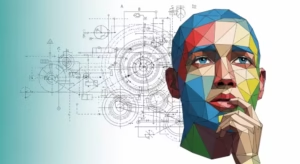The Role of AI in Creative Industries

This blog post explores the significant role of Artificial Intelligence (AI) in creative industries highlighting its transformative impact across various fields such as art, design, and content creation. It dives into the ways AI has revolutionized creativity, from generating unique art pieces to enhancing design processes. The article also addresses ethical concerns surrounding AI’s use in creative endeavors questioning authorship and originality in a rapidly changing landscape. Additionally, it projects the future of AI in creativity, emphasizing its potential to foster innovative practices. To conclude, the post offers actionable insights for professionals looking to harness AI-driven creativity for success suggesting strategies to integrate AI tools into their workflows effectively.
Understanding The Impact Of Artificial Intelligence In Creative Industries
The integration of artificial intelligence in creative industries has prompted significant transformation in how content is produced and delivered. AI tools are not replacing human creativity; rather, they are enhancing it by providing innovative solutions that streamline workflows and facilitate new forms of artistic expression. With powerful algorithms and data processing capabilities AI can analyze trends suggest improvements and even generate original content, making it an invaluable companion to artists designers and content creators alike. As we delve deeper, it becomes evident that the synergy between AI and creativity opens up endless possibilities for artistic exploration and collaboration.
Key Areas Affected by AI:
- Content Generation: Automated writing and video editing.
- Art Creation: AI-generated paintings and music.
- Design Prototyping: Rapid development of prototypes using AI algorithms.
- Marketing Analytics: Data-driven insights for targeted campaigns.
- User Experience: Personalized recommendations based on AI analytics.
- Trend Prediction: Anticipating popular styles and themes.
As AI technologies continue to evolve, their impact on creative industries will likely expand, inviting collaborative opportunities that were previously unimaginable. This evolution necessitates a reevaluation of traditional roles within these industries as professionals adapt to leverage AI tools effectively. Engaging with artificial intelligence not only enhances creativity but also empowers creators to focus more on the concept and emotional depth of their work, allowing for richer storytelling and more impactful artistic endeavors.
Diving Deeper: AI’s Role In Art, Design, And Content Creation

The integration of Artificial Intelligence into creative industries is transforming traditional practices allowing artists and designers to enhance their work and streamline their processes. In this digital age, AI technologies empower creatives to push boundaries offering new tools that help them realize their visions. As we explore the impact of AI on art and design, it becomes evident that its potential extends far beyond simple automation; it also fosters innovation and collaboration.
Understanding the applications of AI in art and design is essential for creatives seeking to stay ahead in a competitive landscape. AI-generated content enables artists to experiment with various techniques leading to unique, original outputs that can defy conventional art forms. Moreover, AI can be utilized for generating patterns textures and even entire layouts allowing designers to focus on higher-order creative tasks while algorithms handle routine elements of their workflow.
| AI Applications | Description | Impact on Creativity |
|---|---|---|
| Generative Art | Art created using algorithms to generate unique visuals. | Inspires innovation and challenges traditional art forms. |
| Style Transfer | Applications that apply artistic styles to images or videos. | Allows artists to explore various aesthetics with ease. |
| Automated Design Tools | Tools that assist in creating layouts and visual elements. | Increases efficiency and enables more design experimentation. |
| Data Analysis | Using AI to analyze market trends for creative direction. | Guides artists toward more impactful work aligned with audience preferences. |
The world of music production is equally influenced by AI-generated content, where algorithms analyze vast amounts of data to create melodies and rhythms reshaping the music industry. Artists now have access to tools that can compose original pieces generate backing tracks and even assist in mastering songs. This intersection of technology and creativity fuels a collaborative environment where musicians can explore new genres and styles without the constraints of traditional song-making processes.
AI In Art And Design
AI is revolutionizing the way artists and designers approach their projects. The use of machine learning algorithms allows for a more personalized design experience, such as tailoring advertisements or products to specific audiences. This level of customization, powered by AI, helps in forging deeper connections with consumers and enhances the overall effectiveness of creative campaigns.
AI In Music Production
In music production, the capabilities of AI have opened a plethora of avenues for musicians. By analyzing listener preferences and trends AI applications can guide artists in crafting more relatable and commercially viable music. From remixing existing tracks to creating entirely new compositions the seamless integration of AI tools into the production process is redefining what is possible in the music realm.
Steps To Implement AI In Creative Projects:
- Identify areas in your workflow that can benefit from AI assistance.
- Research AI tools specific to your creative field.
- Experiment with AI-generated content to understand its capabilities.
- Incorporate AI into your existing processes for efficient output.
- Evaluate the results and gather feedback to refine your approach.
- Stay updated on trends in AI to leverage new technologies.
- Collaborate with other creatives to explore innovative uses of Aİ
Examining The Ethics Of AI In Creativity And The Future It Holds

The intersection of artificial intelligence and creativity raises profound questions regarding authorship, originality, and artistic intent. As AI continues to push boundaries in creative industries it is imperative to examine the ethics of AI in creativity and how it affects creators. The increasing reliance on machine-generated works could lead to issues surrounding authenticity and the role of human artists in the creative process. Understanding these dynamics is crucial for navigating a future where AI could reshape not only artistic expressions but also the entire landscape of creative industries.
Key Ethical Considerations:
- Intellectual Property Rights
- Authorship and Attribution
- Creativity vs. Automation
- Bias in AI-generated Content
- Transparency in AI Processes
- Impact on Employment
- Preservation of Cultural Heritage
As we explore the future of AI in creative industries, it is essential to acknowledge the potential risks that accompany its integration. While AI can enhance artistic capabilities it raises questions about consent, especially when machines learn from existing works without crediting the original creators. By utilizing massive datasets AI may inadvertently reproduce biases present in the data, which could lead to the exclusion of diverse voices in the creative arena. As such, establishing ethical guidelines becomes vital in fostering an environment where both human and AI creativity can coexist harmoniously.
Addressing AI Risks
To fully embrace the opportunities presented by artificial intelligence, stakeholders in creative industries must proactively address the associated risks. This includes establishing a framework for ethical usage of AI technologies that respects creators’ rights while promoting innovation. It is essential for policymakers tech developers and artists to collaborate in crafting legislation that protects individual rights while encouraging artistic exploration. By doing so, they can help to ensure that the benefits of AI are balanced with robust ethical standards that prioritize creativity and human contribution.
Actionable Insights: Harnessing AI-Driven Creativity For Success

Incorporating artificial intelligence into creative industries has become essential for professionals seeking to stay competitive. The emergence of creative AI tools has revolutionized the way content is generated, making processes more efficient and innovative. For instance, AI in filmmaking can streamline pre-production tasks support scriptwriting, and even optimize marketing strategies to reach wider audiences. By blending traditional artistry with advanced technology, creatives can unlock new possibilities that were previously unimaginable.
Next Steps To Incorporate AI In Your Work:
- Identify the specific areas in your creative process where AI tools can be implemented.
- Research and select the most suitable creative AI tools tailored to your industry needs.
- Experiment with AI-driven technologies to understand their capabilities and limitations.
- Collaborate with tech experts or teams who specialize in the intersection of creativity and Aİ
- Gather feedback from peers and clients to gauge the effectiveness of AI integration.
- Continuously update your knowledge on AI advancements to stay relevant in your field.
- Share your experiences and insights to foster a community of creative AI practitioners.
As the creative landscape rapidly evolves leveraging these strategies will help professionals not only to adopt artificial intelligence but also to enhance the overall effectiveness of their work. By utilizing creative AI tools creators can not only save time but also push the boundaries of their imagination, leading to unparalleled success in the industry.
For similar articles, please visit: AI in Business & Marketing
Homepage / humanaifuture.com




